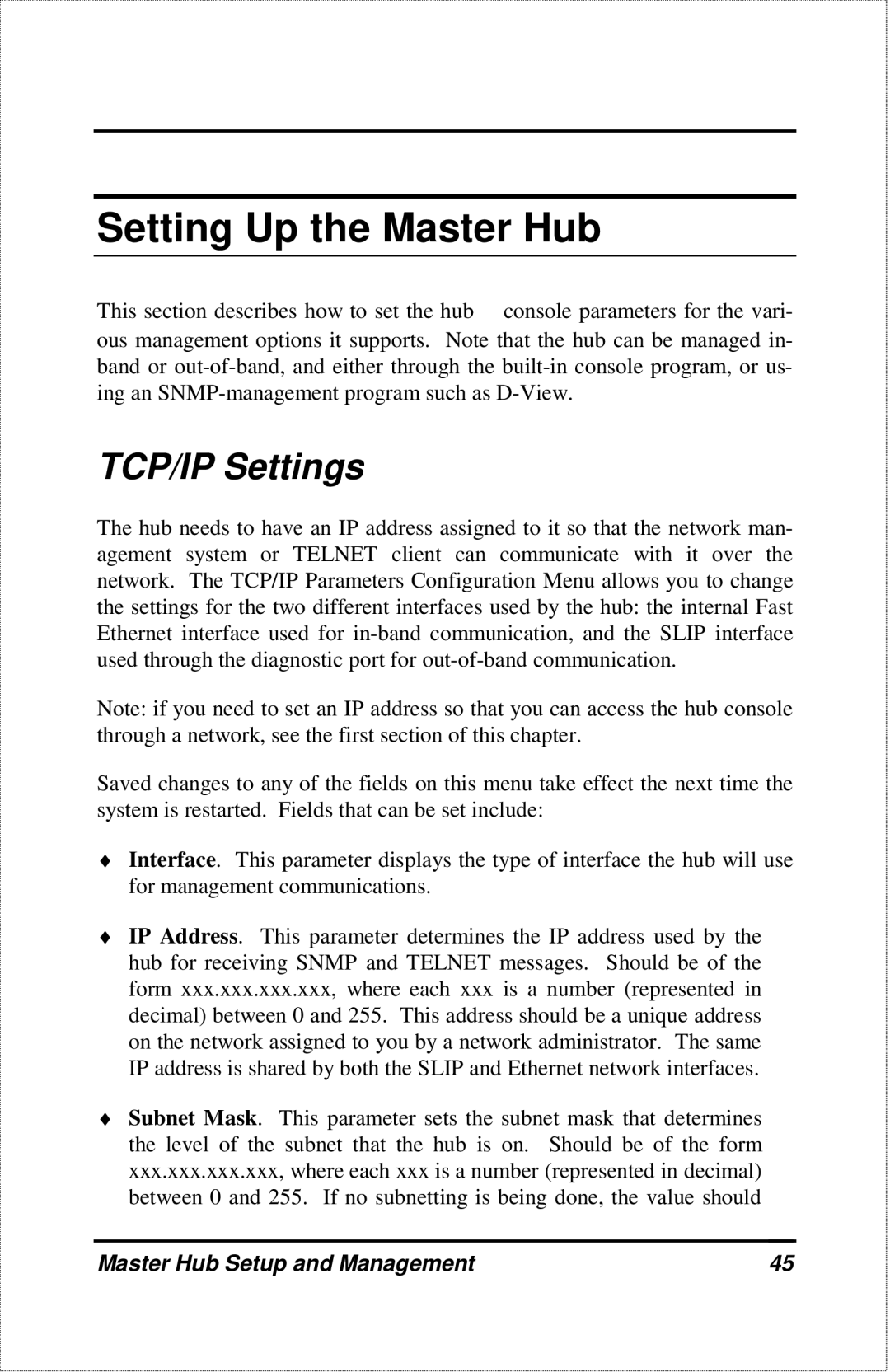
Setting Up the Master Hub
This section describes how to set the hub console parameters for the vari- ous management options it supports. Note that the hub can be managed in- band or
TCP/IP Settings
The hub needs to have an IP address assigned to it so that the network man- agement system or TELNET client can communicate with it over the network. The TCP/IP Parameters Configuration Menu allows you to change the settings for the two different interfaces used by the hub: the internal Fast Ethernet interface used for
Note: if you need to set an IP address so that you can access the hub console through a network, see the first section of this chapter.
Saved changes to any of the fields on this menu take effect the next time the system is restarted. Fields that can be set include:
♦Interface. This parameter displays the type of interface the hub will use for management communications.
♦IP Address. This parameter determines the IP address used by the hub for receiving SNMP and TELNET messages. Should be of the form xxx.xxx.xxx.xxx, where each xxx is a number (represented in decimal) between 0 and 255. This address should be a unique address on the network assigned to you by a network administrator. The same IP address is shared by both the SLIP and Ethernet network interfaces.
♦Subnet Mask. This parameter sets the subnet mask that determines the level of the subnet that the hub is on. Should be of the form xxx.xxx.xxx.xxx, where each xxx is a number (represented in decimal) between 0 and 255. If no subnetting is being done, the value should
Master Hub Setup and Management | 45 |
